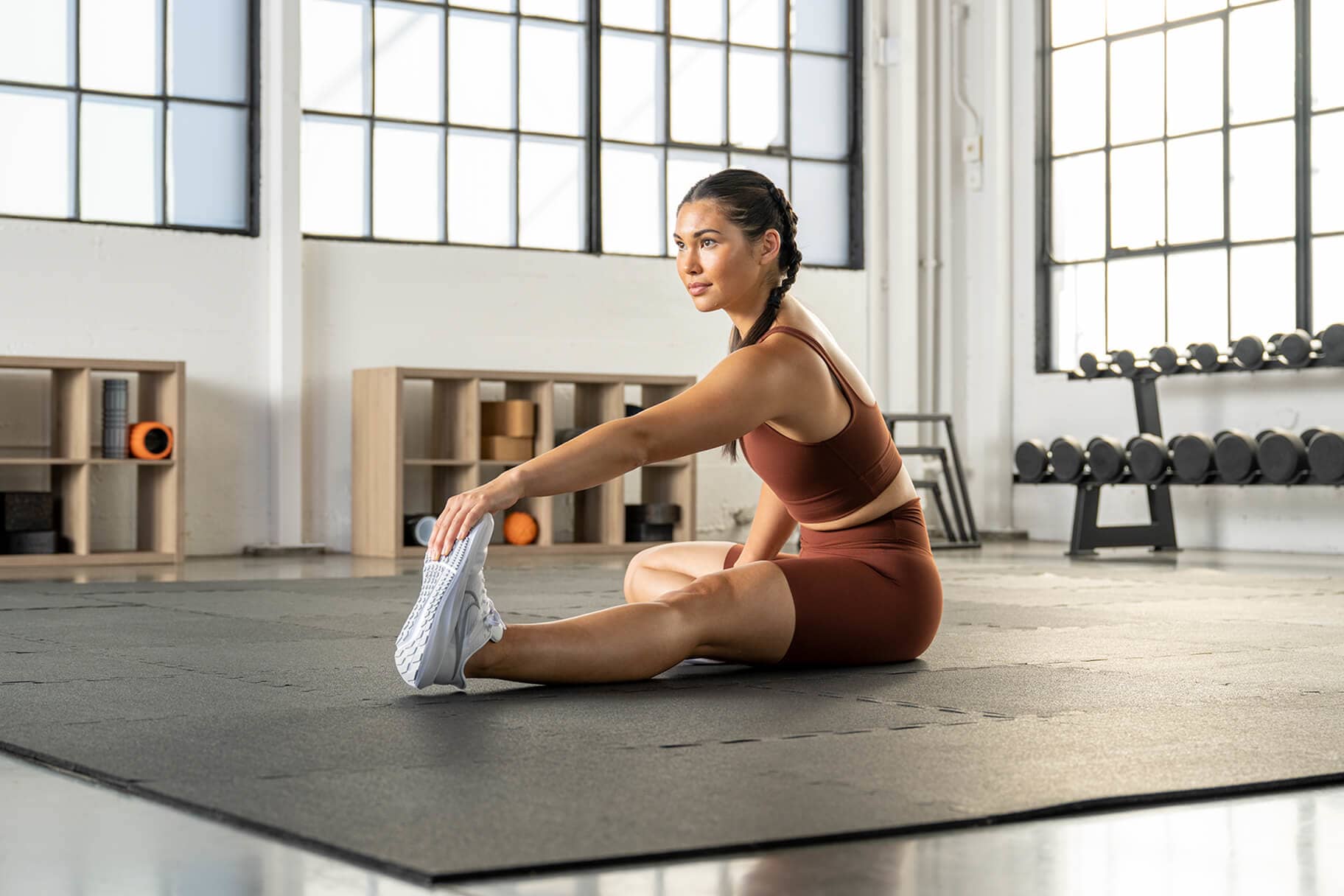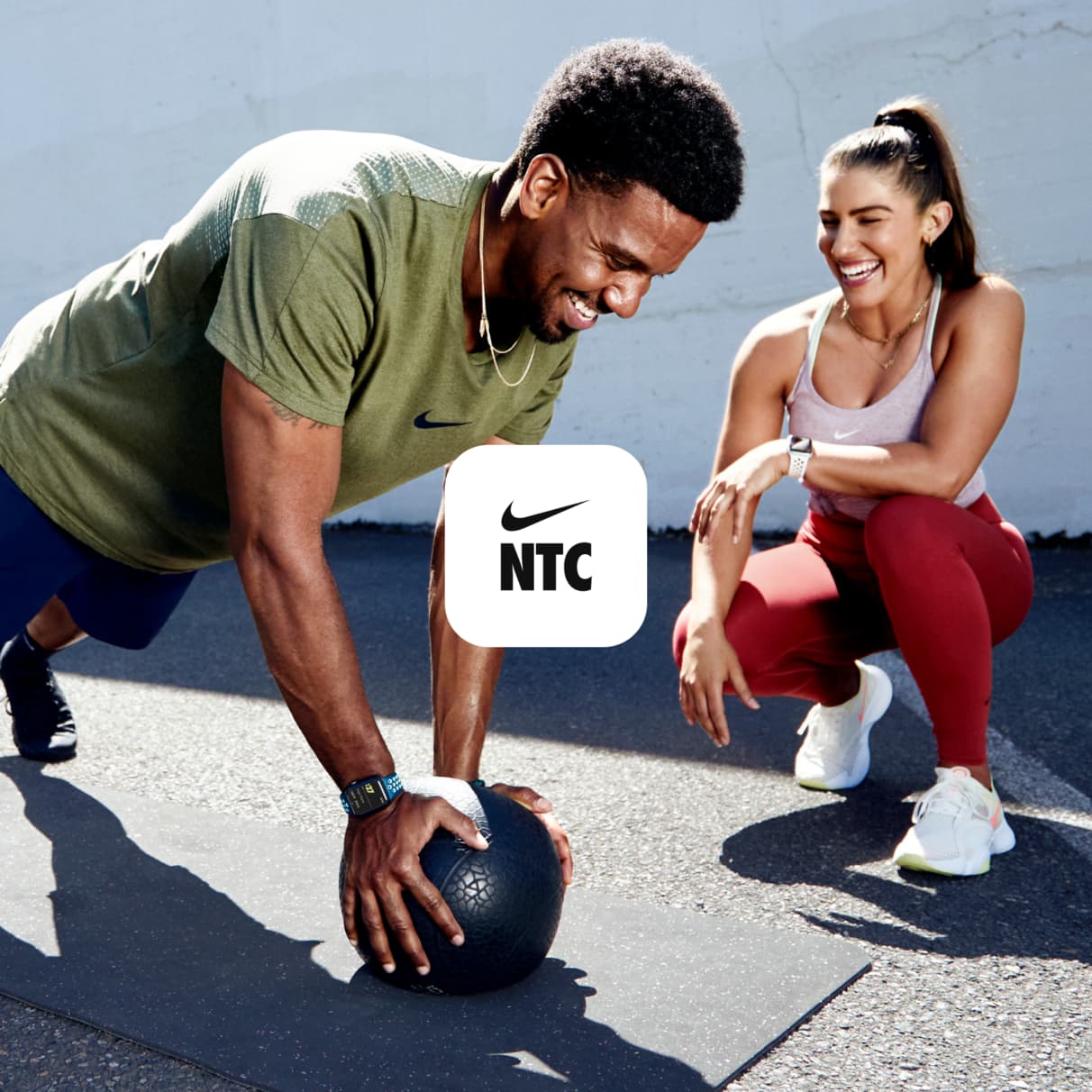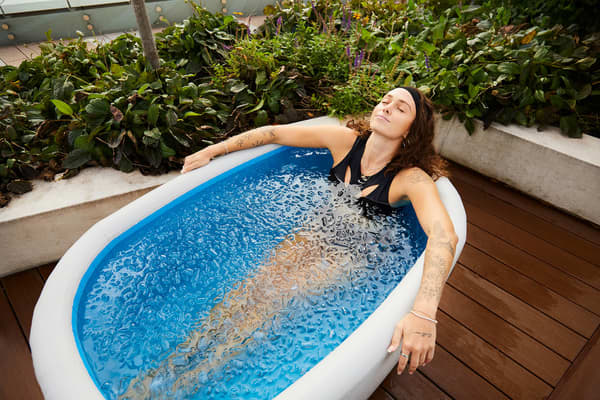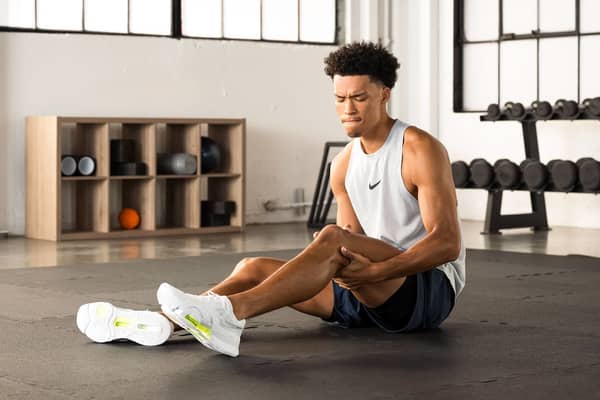Everything to Know About Tight Hamstrings
Sport & Activity
Experts explain potential causes and risks of having tight hamstrings—and offer tips on how to loosen them up a bit.

Tight hamstrings are a common issue with athletes, but they don't need to be an inevitable consequence. After all, careful stretching can help loosen hamstrings to enable them to function at their best—but not everyone takes the time to prevent tight hamstrings, or even knows how to keep them loose.
In case you're not familiar with them, your hamstrings are a group of three muscles that run along the back of your thigh. They extend from your hip to below your knee and work together to allow you to extend your leg straight behind you, as well as bend your knee. These muscles can become tight, making it difficult to enjoy your full range of motion. It can also lead to pain and injury (more on that in a moment).
(Related: 5 Benefits of Stretching Daily, According to Experts)
Tight Hamstring Causes
There are a few potential reasons why you might have tight hamstrings. Those can include:
- Not stretching your hamstring muscles: Failure to use your hamstrings in their full range of motion can lead to tightness, said Albert Matheny, RD, CSCS.
- Sitting too much: Being in positions where your hamstrings are shortened, like sitting for long periods of time, can also lead to tight hamstrings, Matheny said.
- Doing a hard workout: Your hamstrings may simply tighten after a hard workout, said Hannah Dove, DPT, CSCS. "Often in the early introduction of an exercise routine, our bodies respond with soreness that can last 24 to 72 hours and peak at 48 hours", she said.
Having sciatic nerve issues: Your sciatic nerves run from your lower back through your hips and bum, and down each leg. The tissue around these nerves "does not respond well" to stretching your leg out straight for long periods of time, Dove said. Her advice: "It is best to keep your foot neutral or [with your toe pointed down] when stretching your hamstring to avoid tensioning the sciatic nerve".
What is the Concern with Tight Hamstrings?
Having tight hamstrings raises your risk of injury, said Tony Gentilcore, CSCS, and author of "Pick Things Up", a four-week programming guide. He said pulled, strained or torn hamstrings are the top concerns.
Hamstring injuries can be especially painful: They often cause a sudden, sharp pain in the back of the thigh, followed by swelling, tenderness, muscle weakness and even an inability to put weight on your injured leg, per the Mayo Clinic. Specifically, having tight hamstrings can reduce your mobility at the knee and hip—and that can increase strain on your lumbar spine, leading to pain and discomfort, Dove said.
(Related: 3 Dumbbell Back Workouts to Include in Your Workout, According to Personal Trainers)
Risk Factors for Tight Hamstrings
Anyone can develop tight hamstrings. However, some people are more prone to this than others. Those include:
- People with office jobs. "People who sit for a long period of time often have tight hamstrings", Matheny said.
- People who don't use the full range of their hamstring muscles. "People who do not move in different ranges of motion" are prone to tight hamstrings, Matheny said. Meaning, if you always do one type of exercise, like biking or running, you could end up with tight hamstrings because you're always using your muscles the same way.
- Endurance athletes. Long-distance runners and footballers are also more likely to have tight hamstrings because these muscles are often weaker than their more dominant quad muscles, Matheny said.
- People past their early 20s. Age is a factor in tight hamstrings, Dove said. The reason? You often sit more as you get older.
People with a history of hamstring injuries. "Those with previous hamstring injuries are most likely to experience hamstring tightness", Dove said. (It's often linked to biomechanical issues that can come up after an injury.)
Stretches for Tight Hamstrings
Tight hamstrings can be improved by doing stretches, and there are a few that can help—especially if you can do them daily. These are the most effective ones, along with how to do them:
- Toe touch. Sit down on the ground or a yoga mat, with your legs stretched out in front of you. Keeping your back straight, reach forwards and try to touch your toes, holding the static stretch for a few seconds before releasing, Matheny said. You can do this with both legs at once (if flexibility allows) or with one leg at a time.
- Walk-out. Matheny said this is his top preference for hamstring stretches, because it allows you to get a deep stretch, while working other muscle groups. To do them, stand with your feet hip-width apart. Bend at the waist until your hands meet the ground, with your body in a Forward Fold. "Walk" forward with your hands, keeping your legs straight in the process, until you're in a plank position. Hold this pose for a beat and then "walk" your hands back until you're in a Forward Fold again.
Strap stretch. Lie flat on a yoga mat or other comfortable surface. Take a stretch strap or towel and loop it over one foot. Hold the strap taut and gently raise that foot towards the ceiling, while keeping your leg straight until you feel tension in your hamstrings. Hold the pose for 10 seconds or longer, if you can, and then lower it. Repeat with the other leg. This is good to do on a regular basis if you have tight hamstrings, Dove said.
When To Seek Care for Tight Hamstrings
Tight hamstrings are common—you don't automatically need to see a medical professional if you have them. In fact, if you're experiencing tight hamstrings, Matheny recommended doing stretching exercises, such as walk-outs consistently and seeing if that helps ease symptoms.
If you're experiencing pain, it's time to see a doctor or physiotherapist. Gentilcore recommended seeking out the help of a medical professional "if there's ever an extended period of time of discomfort or pain".
It's also a good idea to see a physiotherapist or doctor if you experience pain in the knee, hip or lower back, while participating in sports or daily activities and chores. Dove said the source of this pain could be a result of tight hamstrings.
Words by Korin Miller





